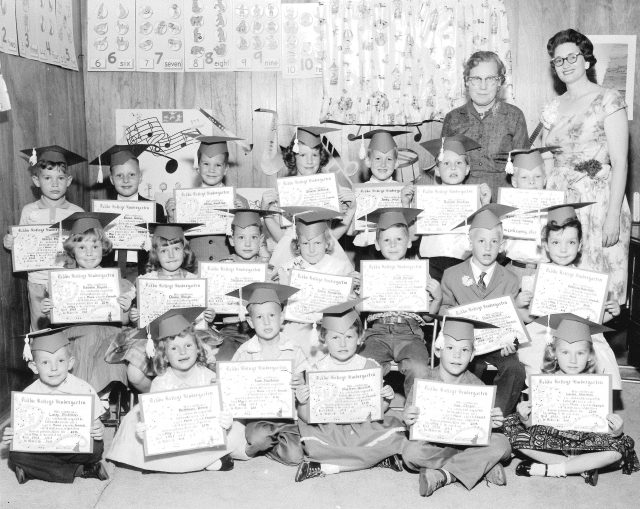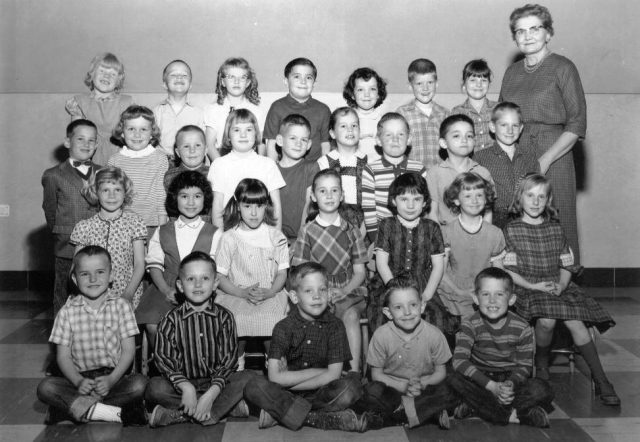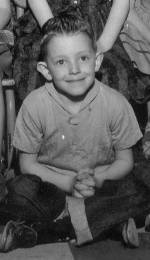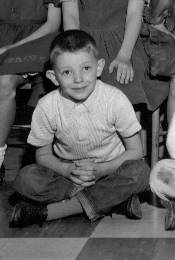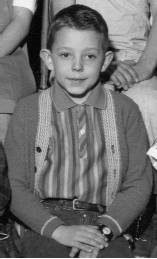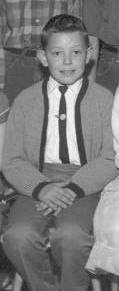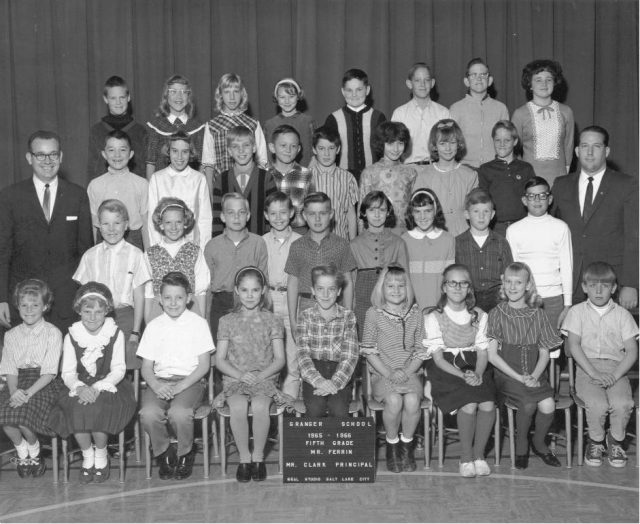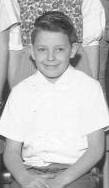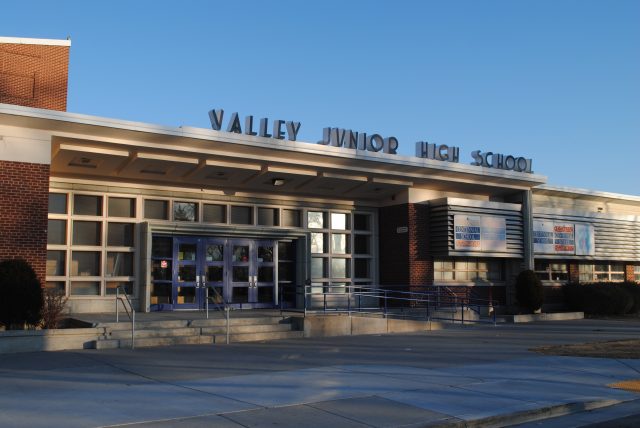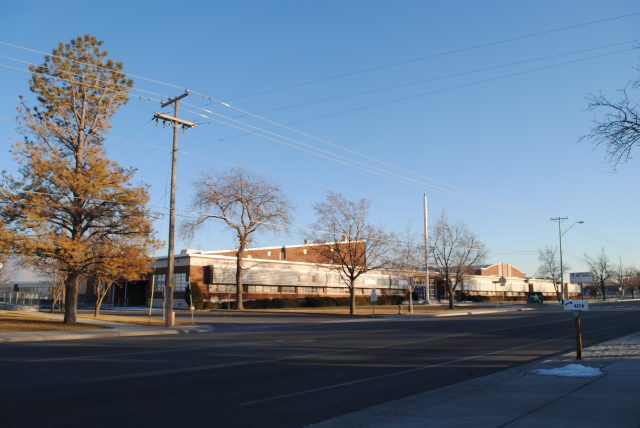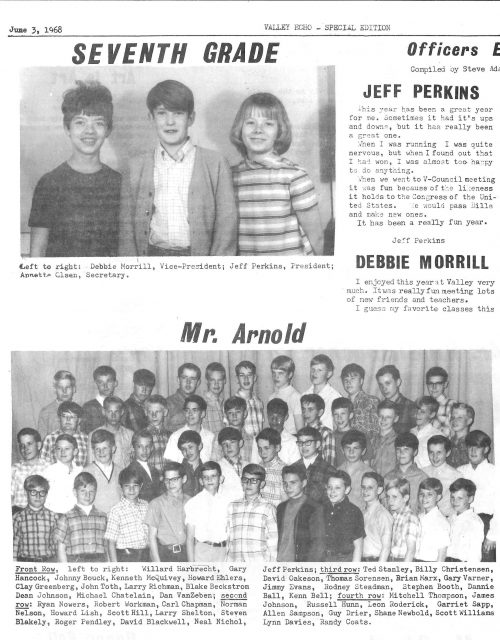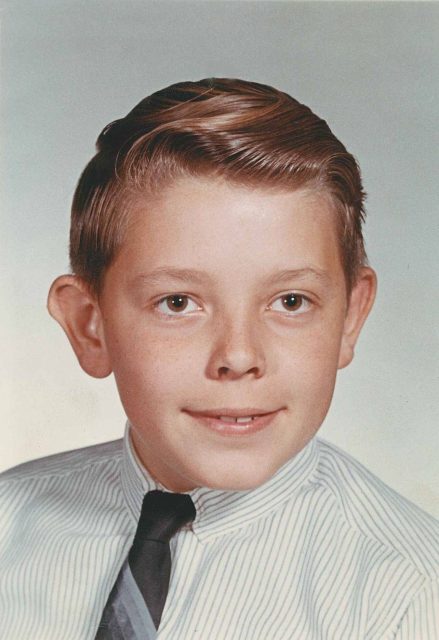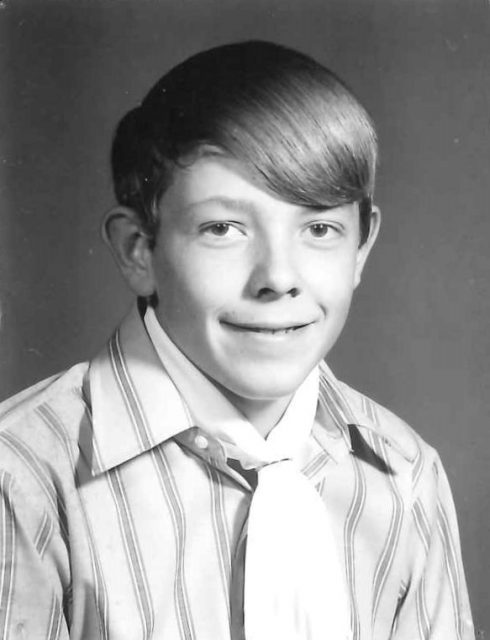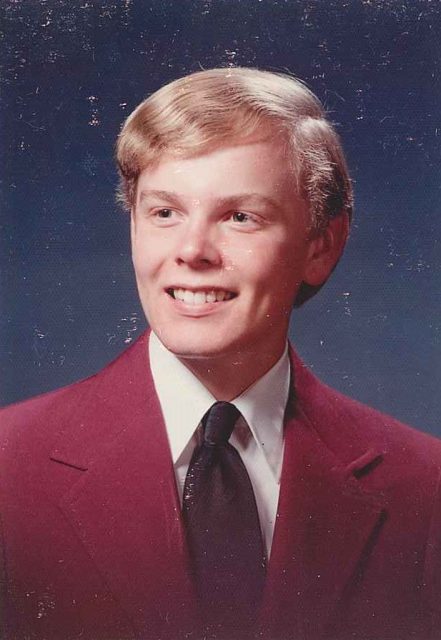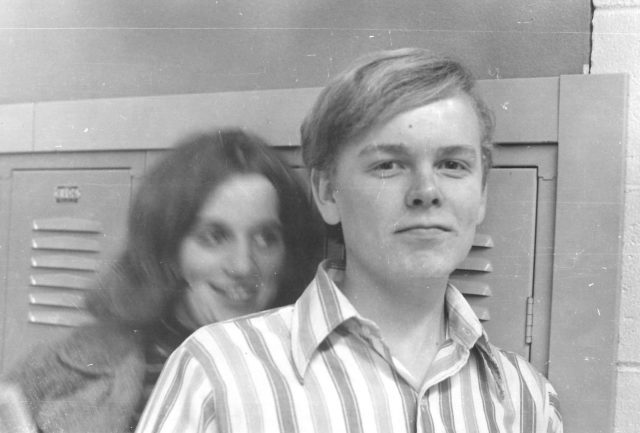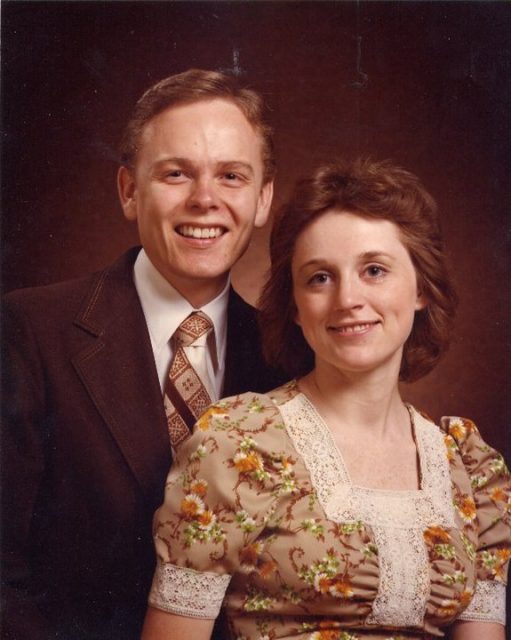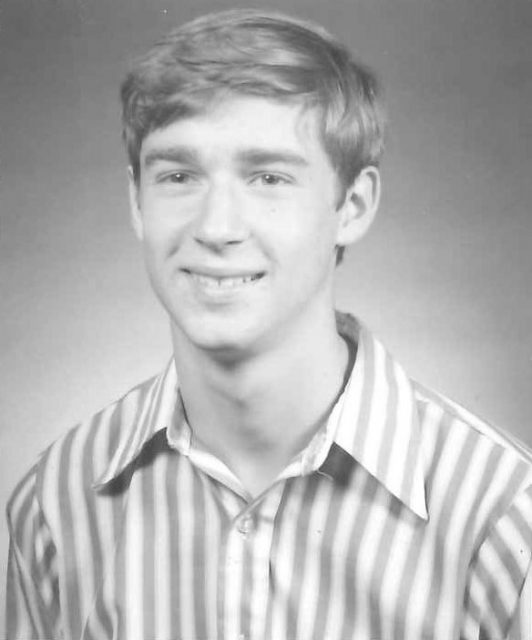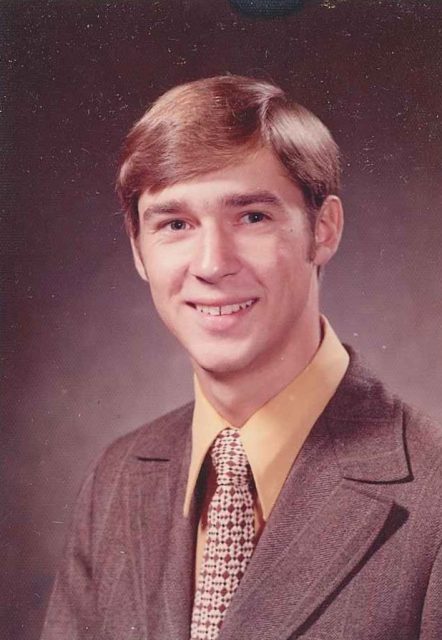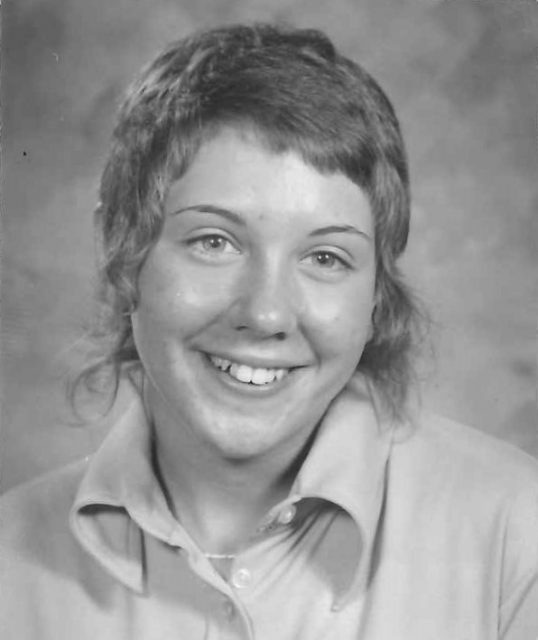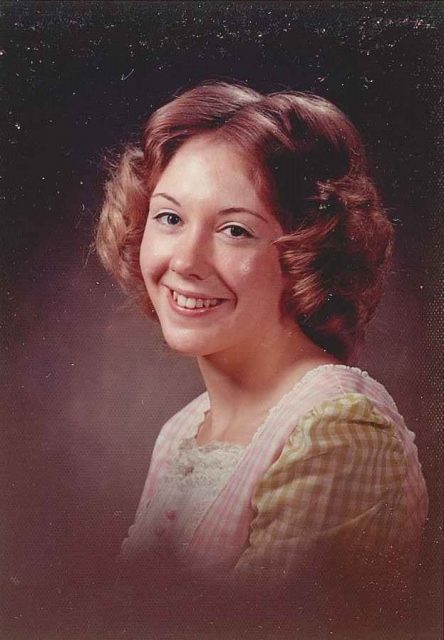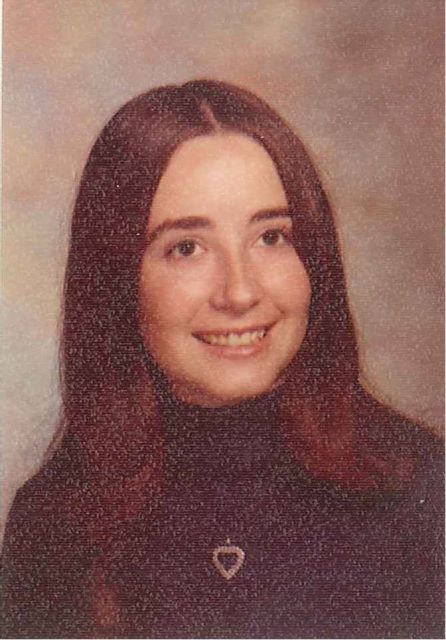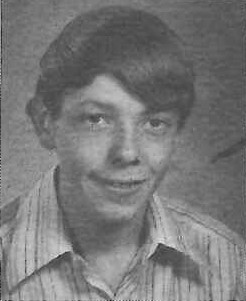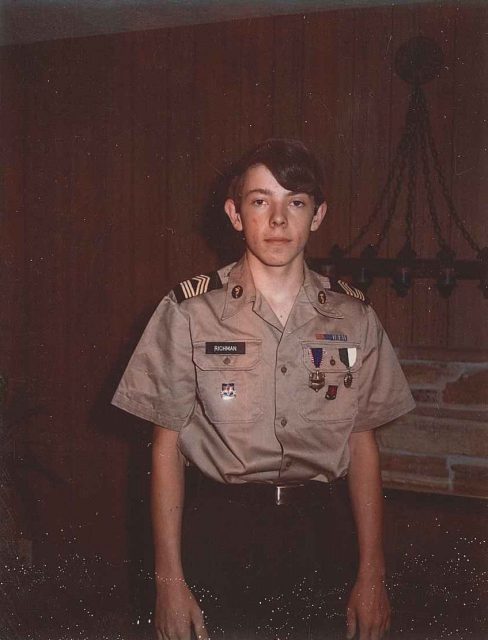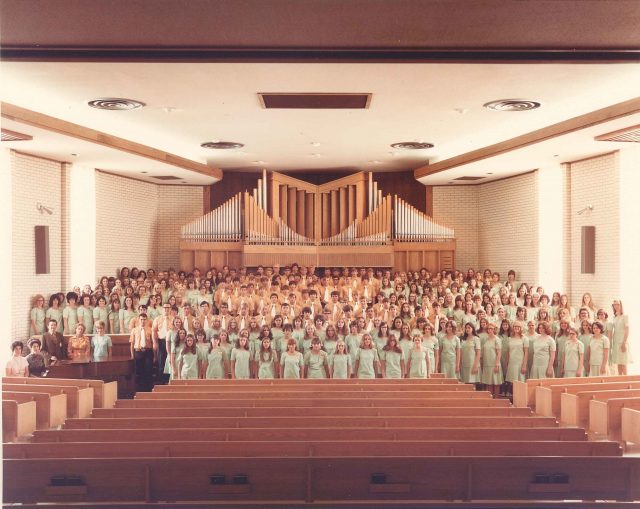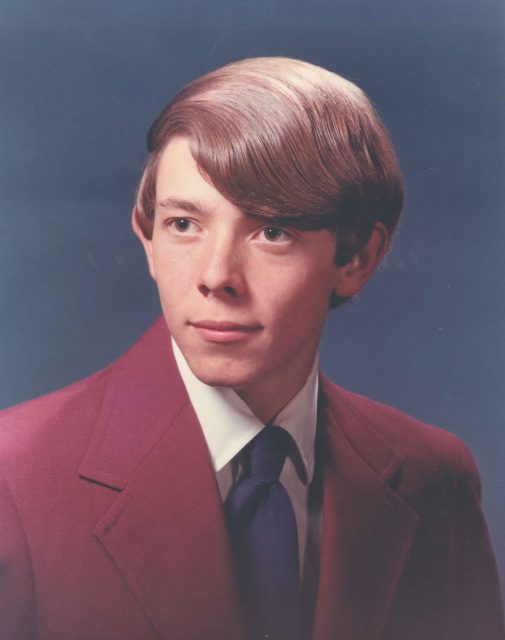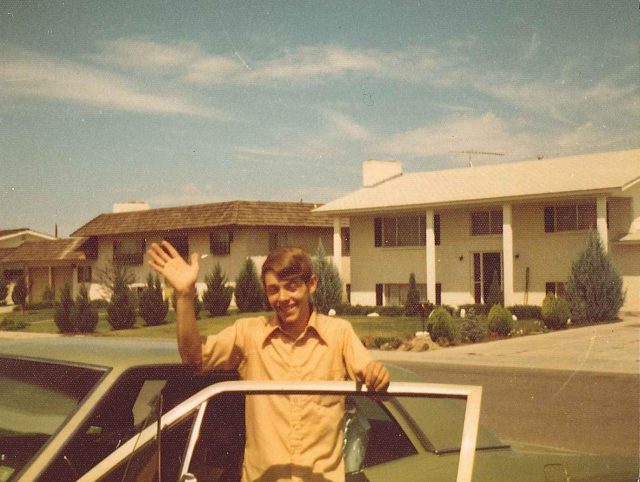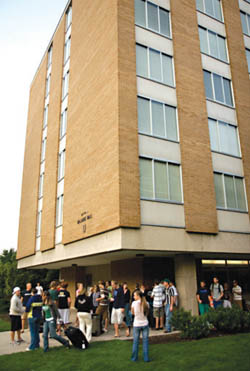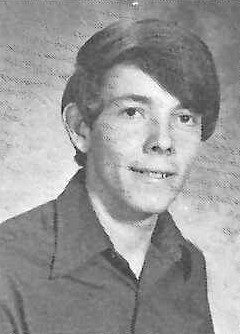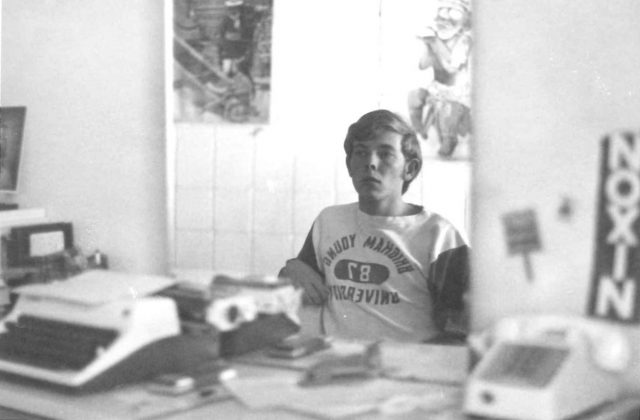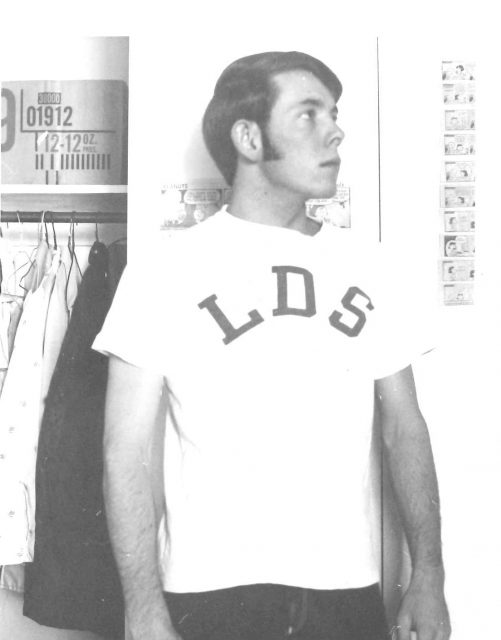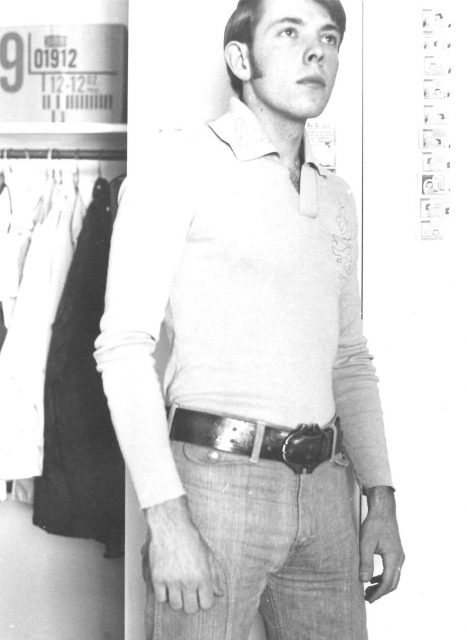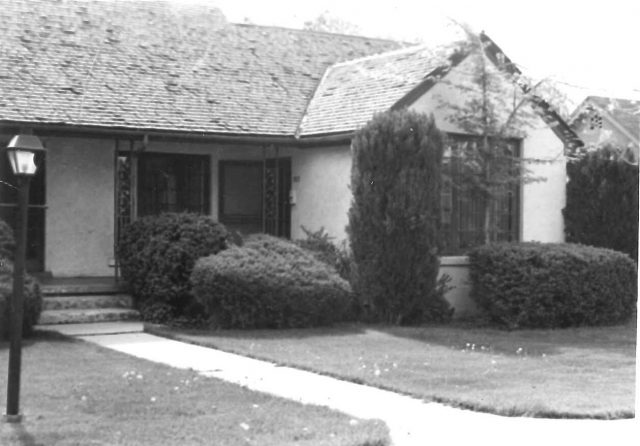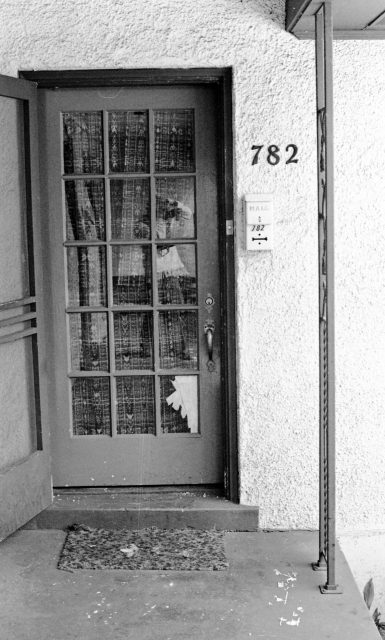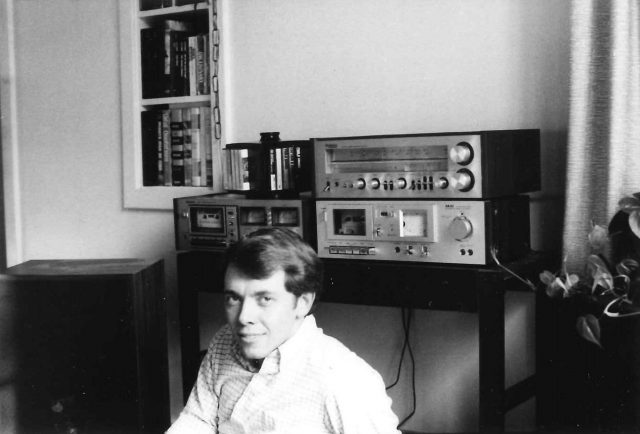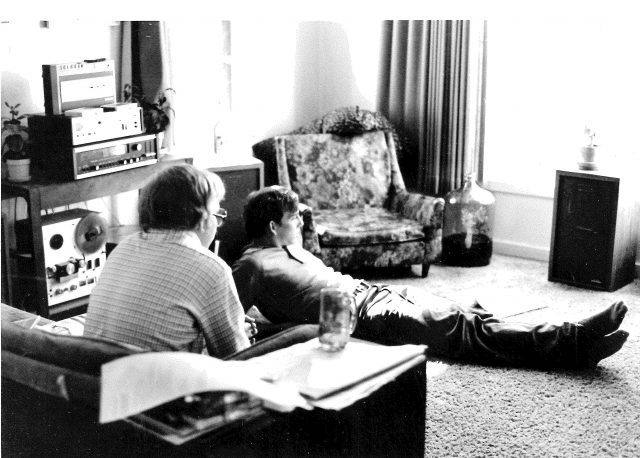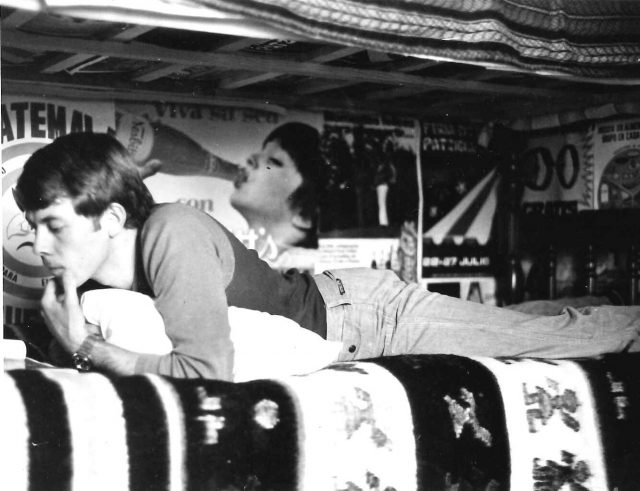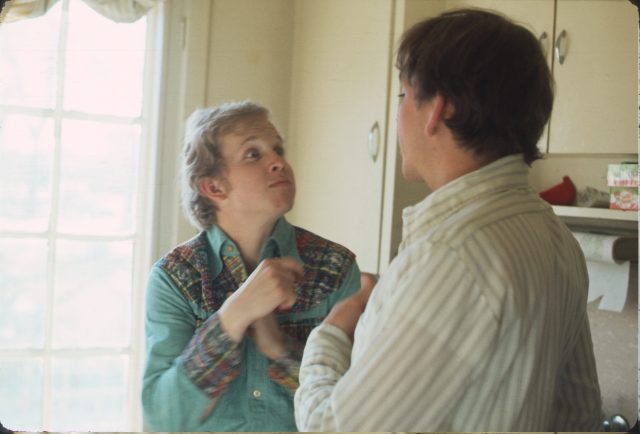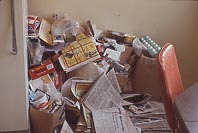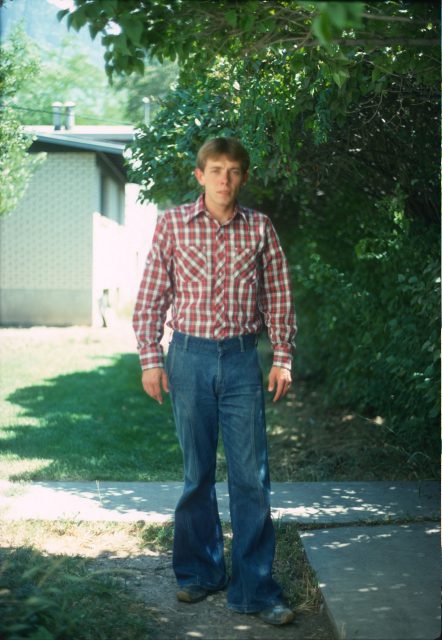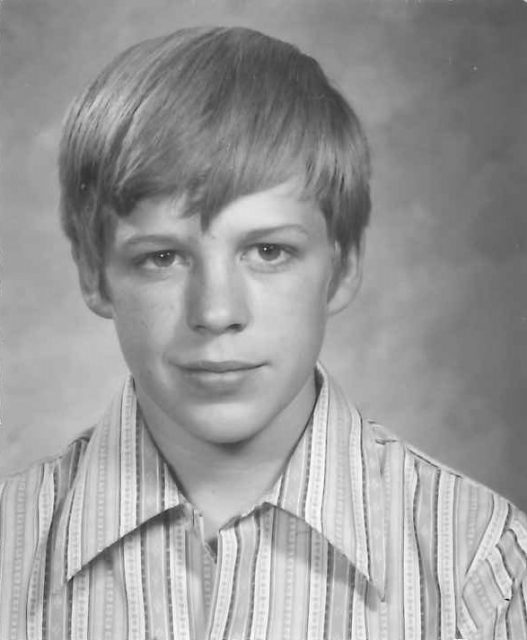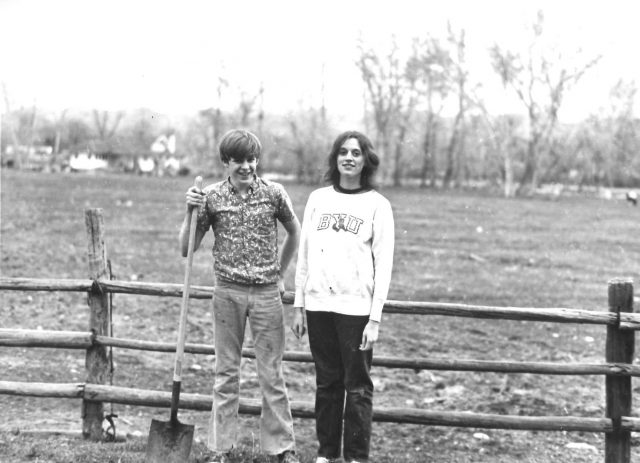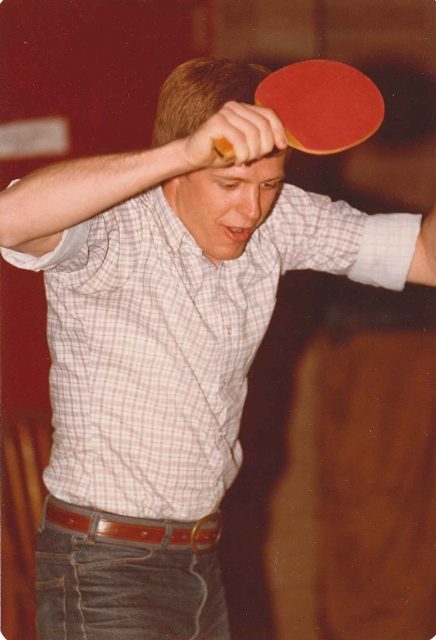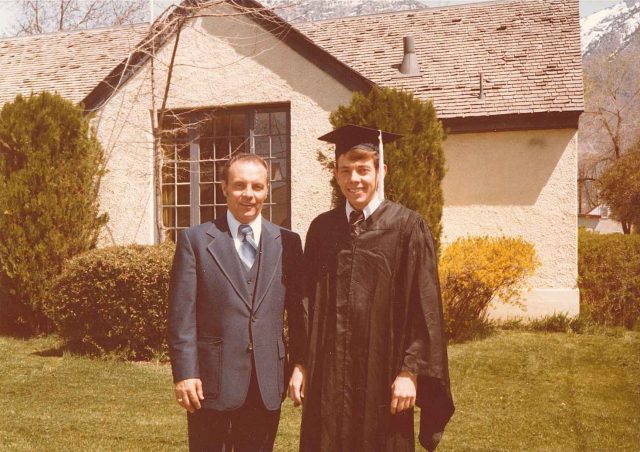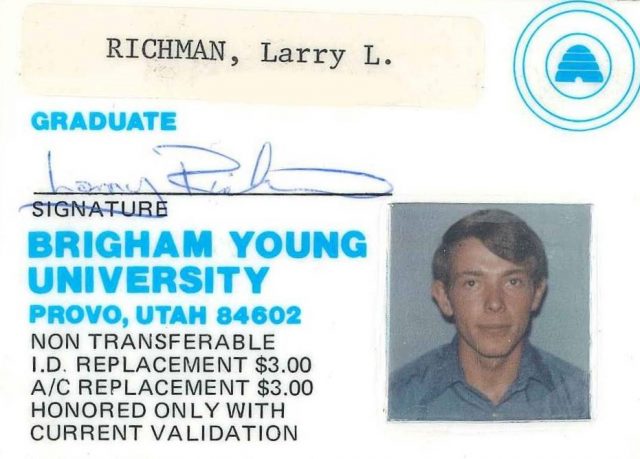School
Below is a summary of my education and certifications:
- Bachelor of Arts, Spanish/linguistics, April 1979, Brigham Young University, Provo, UT
- Translation Certificate, April 1979, Brigham Young University, Provo, UT
- Master of Science, Instructional Science, August 1981, Brigham Young University, Provo, UT
- D. studies, Instructional Science, 1979 to 1981, Brigham Young University, Provo, UT
- D., Religion, November 1982, Clayton Theological Institute, Clayton, CA
- Certificate for Project Management Proficiency, March 1987, American Management Association, NY
- Certified Project Management Professional® (PMP®) July 2001, Project Management Institute, Newton Square, PA
- Certified Product Manager, Association of International Product Marketing and Management (AIPMM), July 2008
- Certified Product Marketing Manager, Association of International Product Marketing and Management (AIPMM), July 2008
Miss Jeanie’s Kiddie College Kindergarten
In kindergarten, I attended Miss Jeanie’s Kiddie College Kindergarten when I was five years old. I learned to speak some French and I was leader of the band in music. On my progress report, she wrote the following comment: “Larry is a precious student. He is full of vitality and does everything well. An ideal student if we could just tape some of that cute chatter.” One day, Miss Jeanie actually put a piece of masking tape across my mouth. I also remember the orange juice and graham crackers that are typical of kindergarten and grade school. See my kindergarten graduation diploma.
Brigham City Elementary, Grades 1–2
In the first grade (1961–62), I went to Central Grade School in Brigham City for first and second grade. The school was just one block to the east of our house. I only had to pass two houses and cross the street to get to the school. It probably took me five or 10 minutes to walk home because how slowly little boys walk when they are not in a hurry. I remember walking on the top of the little stone retaining wall along Knudsen’s property. I also remember one day being assigned by my teacher to teach another student how to skip. (I was apparently quite good at skipping.)
My first-grade teacher was Mrs. Lindstrom. One day at the end of recess, I noticed that someone had left a set of horseshoes out on the playground. They had the name of Mrs. Lewis (a second-grade teacher) on them. My teacher asked me to take them to Mrs. Lewis. When I took them to her, she thanked me and said I was a cute little boy. The next year, I ended up in Mrs. Lewis’ class. (Coincidence? I think not.)
In the second grade (1962–63), my teacher was Margaret Lewis. I won first place in a poetry contest sponsored by the Brigham City Civic Improvement Club. I wrote the following poem about Abraham Lincoln:
Abraham Lincoln was a good, good man.
A president great and true.
I’d kind of like to be like him.
I would. How about you?
He went toward to save the flag.
The red and white and blue.
I’d kind of like to be like him.
I would. How about you?
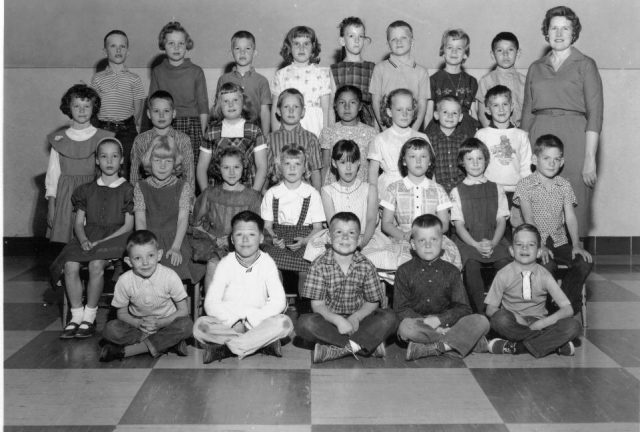
Larry, second grade. See names.
Granger Elementary, Grades 3–6
I went to Granger Elementary for the third, fourth, fifth, and sixth grades. Mrs. C. Poulson was my third-grade teacher. She was the typical grandmother type. She had potted geraniums on the windowsill. During that year, she read to us most of the book The Hobbit. I believe it was in the third grade that the teachers union had a two-day strike. For those two days, we just had to go to class, sign our names on a sheet of paper, then go home. I thought that was great.

Larry, third grade. See names.
In fourth grade (1964–65), Mrs. Wilma M. Cook was my teacher, and she was a strict disciplinarian. I remember I did not like her too well after having Mrs. Polson. She seemed like a mean old lady to me. I believe she was kind of tall.
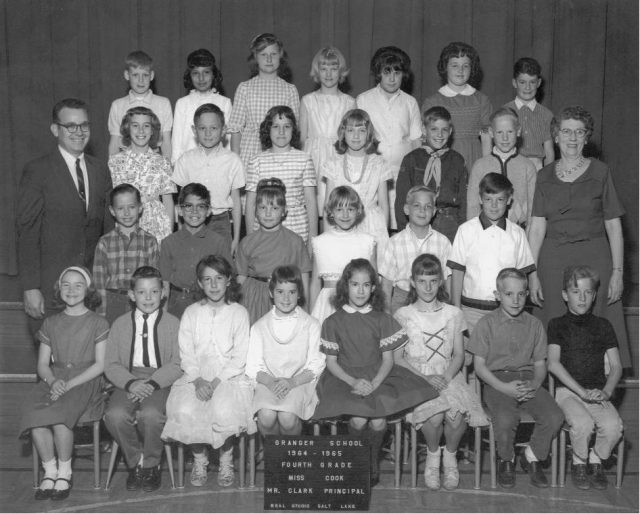
Larry, fourth grade. See names.
In the fifth grade (1965–66), my teacher was Mr. Alvin Ferrin. He was really concerned about students and did a lot to help us any way he could with fun learning experiences. This was the second year that I played the drums in the school band.
In the sixth grade (1966–67), my teacher was Mr. Bert W. O’Leary. He was a Latter-day Saint in one of the other wards. We had parades through the classrooms at Halloween so that all the students could see everyone’s costumes. I remember, in P.E. (physical education) it seemed we would always play dodgeball. Or we had a game where we had bowling pins at each end of the gym, and we’d run down and try to steal them from the other team.
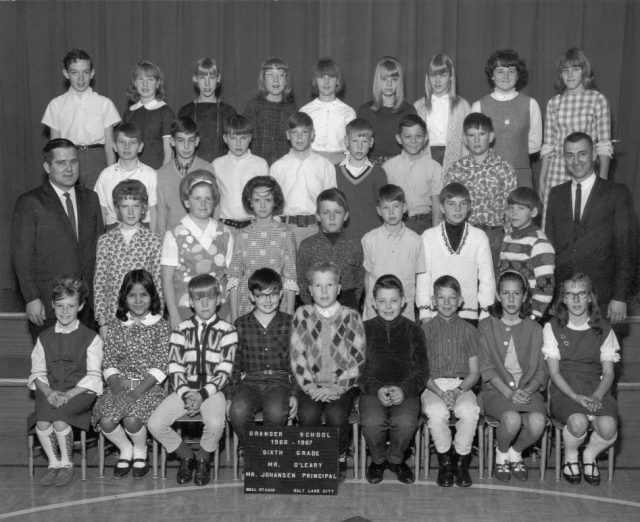
Larry, sixth grade. See names.
The gym was also the lunchroom. I was always a very slow eater. No matter when our class went to lunch ̶ whether it was the first lunch time or the last, I would always be one of the last few kids in the lunchroom. After most of kids had left, the “lunchroom ladies” would have the remaining kids move to two tables at the end so they could clean the other tables and fold them up into the wall. Once most of the kids finished at those two tables, they would ask us to move to the steps in front of the stage. I remember many times finishing my lunch on the steps to the stage. I remember we had to fold our milk cartons flat so they could fit more in the garbage can.
There were tether balls and swing sets behind the school. I did not associate with the other kids very much. I usually played by myself. There was a little a little dirt path around the playground and I used to walk along it and pretend I was a secret agent. I would imagine that there were secret entrances to an underground headquarters where we kept our secret agent spy equipment.
There were two large fields of grass behind the school. One winter during the sixth grade, the field flooded with water from melted snow. They warned us not to go out there because any kid that played in the water would get in trouble. But a few kids from my class and I wadded into the water a little with our boots. In fact, we wadded in so far that the water went over our boots and got our pant legs wet. When we came back in, our teacher sent us to the principal’s office. We stood in front of the office counter and told the secretary that our teacher had sent us to see the principal. I remember hoping that the counter would hide our pants. But the principal took us into his office, gave us a lecture, and wrote our names down. He told us that if we ever got into trouble again, and he saw our name on this list, then he would call our parents. I remember how scared I was to have my name on a list, and I wished there was a way to sneak into his office and tear up that list.
In the sixth grade, we had a spring music festival where 13 of us from the sixth-grade class played a few songs on the ukulele. (See Granger Elementary Music Festival 1 and 2.) Our principal taught us to play the ukulele. I was also on the safety patrol. I felt power wearing that white strap over my shoulder with a badge. At lunch time I would patrol the halls to make sure no kids were running. Once, a kid came up to me and said that two kids were fighting outside. I went out just as they were finishing, and I told them that I had “better not catch them doing that again.” We guarded the crosswalks before and after school. We had long red and white bamboo poles with a flag on the end to hold the kids back until it was safe to cross the street. We called ourselves “traffic cops.” We were also the referees on the playground. Whenever there was an argument about who won a game ̶ especially in foursquare ̶ the traffic cops had the final say.
I had a “girlfriend,” much as I did not want one. Her name was Debra Gwynn. On Valentine’s Day, she sent me a mushy Valentine card. It was the typical grade school “romance.”
I did not like to participate in sports, and I hated P.E. I was always the last to be chosen for baseball teams (even after the girls!), and in the batting lineup I would say that I had already batted and slip to the end of the line.
Once we had a bicycle inspection and I was proud to bring my Varoom bicycle by Mattel. It had a little motor that made the sound of a motorcycle. My uncle Glen was one of the safety inspectors. I must have run over something on the way over, because just as I got there, the tire went flat. But uncle Glen passed me anyway, knowing that I could not ride the bike until I got the tire fixed, so I should be safe. I remember how good it felt to have relatives in places of importance.
Valley Junior High, Grade 7
In the seventh grade (1967–68), I went to Valley Junior High School in Granger, Utah. My home room was with Mr. Arnold.
I was in the concert band, the honor band, and, for a semester, in the orchestra. My band teacher was Mr. Hal Rendlesbach, and my science teacher was Mr. Rindlisbacher. It was unusual to have two similar, but unusual names.
Prior to Mr. Rendlesbach coming to Valley Junior High, there was no enthusiasm for band. When he came there were only a dozen or so old band uniforms in the closet. He energized the program and got 185 students to march in the Christmas parade. Since there were not enough uniforms, we all just wore coats over our regular clothes. We all had matching stocking caps that served as our uniform. We had so many students, that our practices would take up the whole school field. There were over 250 students in the school’s instrumental program.
I took my first year of Spanish from Mrs. Pat Cole. We had a Spanish festival one day at BYU where we put on skits and gave talks in Spanish. We also learned to make piñatas and I made one for our family Christmas party.
In our school district, the curriculum required you to take a physical education class every year. I knew I was going to hate seventh-grade P. E. We did dumb little exercises and relay races, and I hated every one of them.
East Junior High, Grade 8
When we moved to Boise in 1968, I should have attended Fairmont Junior High, but it was overcrowded, so we were bussed eight miles across town to East Junior High. I took my second year of Spanish from Mr. Loveland, a brother of Ron Loveland in our stake presidency.
My home room teacher was Mr. Allen Dougal (science teacher). Mr. Bill Morse was my history teacher and he had appendicitis during the year and almost died. I was sure glad I did not have to take P. E. In the Boise school system, P. E. was only required in the seventh grade and the sophomore year in high school. Memorable students: Craig Hurst, Mitch Poole, Bruce Dayton, David Smith, Mark Smith. And Mike Read. (See my eight grade school yearbook. I appear on page 36.)
Fairmont Junior High, Grade 9, 1969–70
In the ninth grade (1969–70), I attended Fairmont Junior High. I was in the concert band and the marching band. We marched in the Boise Fairyland parade. Our band uniform consisted of yellow pullover sweaters with a falcon emblem on the back, a navy-blue ascot, and white pants with blue stripes from the pockets to the cuffs. Mr. Rollo Bacon was the band instructor.
As part of my ninth-grade speech class, I gave a Toastmaster speech on January 28, 1970. I also entered the Sunrise Optimist Oratorical Contest and, with fellow student Tracy Boldon, won first place on April 14, 1970, with speeches titled “Youth—Full Partners in a Better Tomorrow.” We went on to compete in zone and regional contests on April 16 and 24. Tracy was a cheerleader, so this was a big deal for me. (See photo and newspaper article 1 and article 2.) I participated in the Boise City Junior High Speech Festival on May 9, 1970. I was also in the Reader’s Digest Speaking Contest and was the narrator in a school play.
In the ninth grade, I developed a friendship with David Beal who was in my ward. By the tenth grade, that friendship had extended to a group of three guys and three girls (David Beal and Claudia Flake, Bob Peck and Cathy Ellsworth, and KaLee Neal and me). We spent a lot of time with each other and participated in school and church activities together. The three couples dated regularly until the guys went on missions. One of the couples later married (David and Claudia), and the rest of us maintained close contact for many years.
It was also my first year of early morning seminary. For the first three years of seminary, I took early morning seminary at the Northview Chapel, 3.5 miles from our home. In the nineth grade, after seminary I would walk a mile to Fairmont Junior High. In the tenth and eleventh grades, I drove 2.5 miles from the Northview seminary to Capital High. Richard Nelson taught us Church history in the nineth grade. In the tenth grade, Farrell Bennett taught us the course on the Book of Mormon. My third-year seminary teacher was Bonnie Read, who taught us the Old Testament.
In my senior year, early morning seminary was held at the new Goddard meetinghouse. Richard Johnson was the teacher of the course on the New Testament. Our seminary class won the stake championship in scripture chase competition and on March 17, 1973, we placed second in district competition with ten stakes participating. Seminary was a testimony-building experience for me. Those four years helped to instill gospel standards in my life. I cultivated many good friendships there and found it easier to live gospel standards through each day.

Seminary class 1969-70. See names.
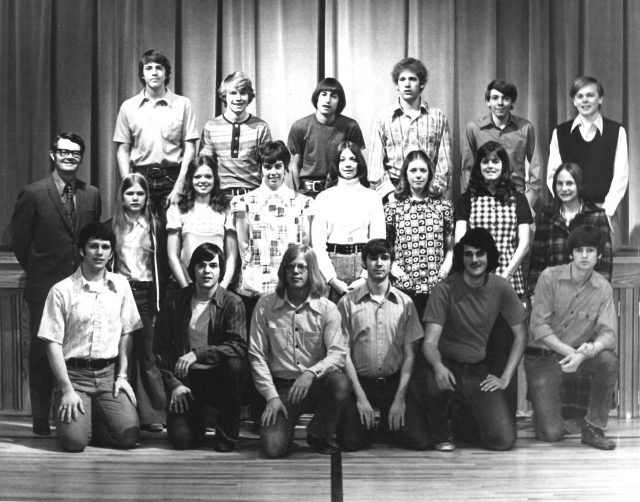
Seminary class 1972-73. See names.
I completed the summer driver training course on July 15, 1970.
Capital High School
Grade 10, 1970–71
In the 10th grade, I went to Capital High School in Boise, Idaho.
Physical education was required in the sophomore year in high school. But I found that the Army Reserve Officers Training Corps (ROTC) counted as P. E. credit, so I took it. (Also see the section “11th grade” below.)
I became friends with David Beal and Bob Peck. We began going to the Saturday night youth dances at the Cassia Stake Center. A girl from my ward, KaLee Neal, also went to the dances, and I danced with her whenever I got the courage. David Beal met Claudia Flake in their choir class.
In December 1970, we began Church dance practices taught by Sister Vinette Southwick, and my dance partner was KaLee Neal. David Beal’s mother helped by calling the dancers to remind them of practices, and Claudia Flake enjoyed any chance to talk with her.
On May 6, 1971, we held a surprise birthday party at Flake’s house for David Beal’s 16th birthday.
May 22, 1971 was the Stake Dance Festival at the Boise State College gymnasium. (See Dance Festival program.) I danced Cupid, Hitchin’ A Ride, Raindrops, Square Dance, Hopak, Charleston, Entrance, and the Samba. Sister Beal was not able to attend the festival because of her health, so two days later, we held a special performance at her home in appreciation of her help. (Dance practices were every Saturday from 4:00 p.m. to 7:00 p.m. from December to May.
On June 12, 1971, the dance team traveled to Nyssa, Oregon, for a Regional Dance Festival, where I danced the same dances as at the stake festival. Somehow it worked out that I sat next to KaLee Neal on the bus ride back to Boise. I put my arm around her, and she put her head on my shoulder, and we both sat in that rigid position the entire trip from Nyssa to Boise.
From June 22–26, 1971, I went to Salt Lake for June Conference and the All-Church Dance Festival. Bob Peck and David Beal were also there. It was held at the University of Utah stadium and was the last All-Church Dance Festival held. In the following years, dance festivals were held on a regional basis. We danced Cupid, Raindrops, and Hitchin’ a Ride.
June 27, 1971 was the June Prom dance at school.
July 10, 1971 was my 16th birthday. My mother threw a surprise party for me and invited David Beal, Bob Peck, Claudia Flake, Wendy Warr, and KaLee Neal. We played pool and listened to records in the basement until about 10:30 p.m. when we went to the Saturday night dance. David and Claudia requested that they play “Bridge Over Troubled Waters,” and when the disc jockey announced it was for a guy who just turned 16, Claudia and Wendy let out a big scream. Everyone there knew who was “Sweet 16.”
July 23–25, 1971, was a tri-stake youth conference, complete with tubing down the Boise River.
July 31, 1971 was another dance festival, as we put on “Little June Conference” for the stake.
August 19, 1971 was Bob Peck’s 16th birthday party at Ann Morrison Park, complete with games of wolf-wolf and truth or dare.
From August 23, 1971, until April 1972, I worked at the M&W Market grocery store at 912 North Ninth Street (on the corner of Fort Street). I made $1.65 and a half cents an hour. (I was grateful for that half cent, which meant that every two hours of working made me an extra penny!) I bagged groceries and cleaned and stocked the store.
Grade 11, 1971–72
By the now, the “gang” was well established. This was not a typical high school gang, but that was what we called ourselves. We were a group of friends that did things together and helped each other do what was right. We spent a lot of time with each other and participated in school and church activities together. The gang consisted of three guys and three girls—David Beal and Claudia Flake, Bob Peck and Cathy Ellsworth, and KaLee Neal and me. Jim Flake (with various partners over time) was also a member of the gang. The three couples dated regularly until the guys went on missions. One of the couples later married (David and Claudia), and the rest of us maintained close contact for many years. Sister Norma Chivers, a home economics teacher, was our unofficial “gang advisor.” The gang met in the high school library at noon to study (that is, talk and make noise). The librarians would throw us out regularly, but we would always beg our way back in the next day.
A party typical of the strange things we did as a gang was one on October 7, 1971, at Jim Flake’s house. We met early in the morning to help him deliver newspapers in his car (if you could call it a car) that he called the “Cherry Bomb.” We then had pancakes (if you could call them pancakes) for breakfast.
As a project for one of Jim’s classes in about April 1972, we produced a gang newspaper we called the Good News Gazette. (See Gang newspaper.) Everyone in the gang contributed articles, comics, and artwork for it.
My junior year was my second year in the Army Reserve Officers Training Corps (ROTC). Both years, I received the Superior Junior Cadet Decoration award from the Department of the Army. (See Superior-Cadet-Award-1970-71.jpg and Superior-Cadet-Award-1971-72.jpg.) The award was given to the outstanding cadet in each year of military training at each school, based on overall academic and ROTC record. I also received the Academic Achievement award from the Reserve Officers Association. It was given to one “cadet in each class of each school earning the highest academic grades in ROTC during the school year.” I could have also earned the Morrison-Knudsen flight scholarship for a private pilot’s license had I decided to remain in ROTC my senior year. On January 24, 1972, I was promoted to the rank of Master Sergeant. That same day, I was assigned the duties of Operations Sergeant, Guidon Bearer, and First Platoon Sergeant.
In my junior year, I was also on the school newspaper staff. I wrote a few articles, but mostly worked in the photo darkroom typesetting the headlines on a photographic machine.
On January 15, 1972, I went to the regional weekly Saturday night dance. When I got home, I found a note on the refrigerator that said, “Larry, President Featherstone wants you to speak 4 minutes at conference.” Claudia found a similar note when she got home that night. The next day, we both spoke in stake conference with 3,000 people and the visiting authority was Elder Sterling W. Sill. See the thank-you letter from the stake presidency and the note that Rick left on the fridge.
Vaughn J. Featherstone was our stake president and was later called to the Presiding Bishopric. His first counselor was J. Richard Clarke, who became our next stake president and was later called to the Presiding Bishopric. Our next stake president was Seth Redford, who was later called as a mission president and then president of the Boise temple. The stake president before Vaughn J. Featherstone was L. Aldin Porter, who was later called as a General Authority.
On January 25, 1972, the Beals moved to Meridian, but David was able to finish school at Capital High. When school finished, KaLee Neal’s family moved to Portland, Oregon. I saw her only a few times between then and my mission. After my mission, we saw each other only twice.
I became a member of the National Honor Society on May 9, 1972.
May 27, 1972 was seminary graduation. I received a certificate of achievement as a junior with one more year of seminary ahead of me. I also spoke during the commencement program. The visiting authority was Harold B. Lee, who at the time was the President of the Quorum of the Twelve Apostles and first counselor to President Joseph Fielding Smith. (See Seminary commencement program 27May1972.)
June Conference: Tan Shirts and Green Dresses
In June 1972, our region formed a youth choir that went to Salt Lake City to sing for June Conference. (See June conference ticket 23Jun1972.) Brother Sam Thompson, a member of the stake presidency and a relative of mine, was the director, and organized a choir of over 350 youth from the three Boise stakes. We were asked to sing in nearly every session at June conference. The men sung in the priesthood session, the women sung in the women’s session, and awe sang as a combined choir in almost all the other sessions.
We began to practice around the end of 1971, and we had performances at the Boise Stake Center (June 10) and Meridian High School (June 16–17) before going to Salt Lake for June Conference. (See Regional choir program 1 and 2.) We also sang for stake conference with Sister LaRae Carter conducting. The guys wore white ties and tan shirts with a Boise Regional Youth Choir patch on the pocket. The girls had green dresses.
Just after we arrived in Salt Lake, we went to the main arena of the Salt Palace, where most of the sessions of June Conference were held. We began practicing while a stage crew finished adjusting the lights for one of the plays they were to present. As we were singing, Brother Clair Likes, who was on the General MIA Board, stepped off one of the catwalks high above, crashed through the ceiling, and fell about 20 or 30 feet onto the seats. We were all stunned, not knowing what had happened. His breaking through the ceiling sounded like an explosion. Several men ran to help him. They gave him a blessing, and soon the ambulance arrived. He was in a body cast for quite some time, and later fully recovered, which we believe was from the blessing and the faith and prayers on his behalf. We joined together in a prayer after they took him to the hospital. That experience strengthened us and brought us closer together.
We felt the Spirit with us through all those conference sessions. We did not sing at the final session of conference but had a testimony meeting in the basement of the tabernacle. There were many who wanted to bear their testimony, but not everyone could in the time we had. One girl tried several times to get to the chairs in the front, but before she could get to the chairs, they would be filled. Finally, she picked up the chair she was sitting in and carried it to the front.
The conference session ended before our testimony meeting did, and several General Authorities walked by our meeting on their way to the tunnel to the Administration Building. President Joseph Fielding Smith came by and started to walk over to us, but then turned around and left. Later we were told that he was so overcome by the Spirit that he did not want to say a word.
I grew from that experience. I thrilled as I sat in the Tabernacle Choir seats so near the General Authorities and listened to their inspired instructions. And I enjoyed associating with so many fine teenagers in such a spiritually rewarding experience.
Grade 12, 1972–73
My senior year in high school was probably the most academically difficult of all four years of high school, but I took it more seriously and earned a 4.0 grade point average all year. Throughout high school, I had a cumulative grade point average of 3.578 and graduated in the upper 11% of my class (56th of 487 graduating seniors). See graduation program, page 1, page 2, page 3, and page 4.
I took a class in German. David Beal also talked me into signing up for a cappella choir. I enjoyed singing but had never been in any organized choir. Jerry Vevig was the choir director. He was a bus driver in the summers and was one of the drivers of the Boise Regional Youth Choir at June Conference. In June, David had talked with Mr. Vevig about me joining the a cappella choir. He needed more tenors and agreed that I could sign up for the class, subject to an audition. I signed up for the class, but never had the audition. Sometime during the first few days of class, he came and sat beside me while we were singing. I guess he was satisfied because he did not ask me to leave the class. I learned a lot about music that year and we had many concerts and performances. In November 1972, we had a choral clinic and concert in Nampa. On April 27, 1973, we performed at Boise Music Week. In May 1973, we went on a tour through Idaho, Oregon, and Washington.
From October 10, 1972, until August 1973, I worked for Dorsey’s Dry Cleaners at 4920 Emerald. I earned $1.60 an hour. I was the delivery boy and drove a van picking up laundry and delivering the clean clothes.
On April 14, 1973, the “gang” (see “Friendships” for a definition of the “gang) participated in a 20-mile walk-a-thon for the March of Dimes.
On June 30, 1973, I participated in another stake dance festival, and on July 4 in a regional dance festival at Bronco Stadium at Boise State College.
See pictures in the Capital High yearbook: cover, page 22, page 70, page 71, and page 175.
See seminary graduation 1973 program page 1 and page 2.
BYU
Additional information about my college years can be found in the “Church” chapter (which describes the ward, friends, and activities) and in the “Work” chapter (which describes my part-time work while going to school).
BYU Freshman Year, Fall 1973–Winter 1974
After graduating from Capital High School, I decided to go to Brigham Young University. All my friends were going to BYU, and I figured that BYU was as good as anywhere else. So, the summer after graduating, David Beal and I went with my father and stepmother to Salt Lake for June Conference and one of the days, we went to Provo to find a place to live.
The day I left Boise for BYU, I loaded up our green Ford Galaxy to drive to Provo. We had three cars in the family, so my parents let me take one of them. I had only been to Provo twice before—the day mentioned above when we went to find a place to live and once in the seventh grade when our Spanish class at Valley Junior High in Granger went to BYU for a Spanish festival.
I lived at Deseret Towers, Penrose Hall, room T-505 on the fifth floor. My roommate was David Beal. When I arrived, David had not arrived yet and the room seemed cold and empty. But that soon changed when David arrived, and we moved in all our things. I really enjoyed living there as a freshman. There were 44 guys on the floor, and there was always something going on. I think the dorms made it easier for me to adjust being away from home than had I lived in an off-campus apartment that first year. I remember having water fights on the floor. The carpet got so wet that we could run down the hall and skid on our heels with water splashing in front of us.
I served a mission in Guatemala and El Salvador from August 1974 to August 1976. See the “Mission” chapter.
BYU Sophomore Year, Fall 1976–Winter 1977
Church
In September 1976, Bob Peck and I moved into a four-man apartment at the University Villa, at 865 North 160 West, Apartment #62. I attended the BYU 2nd Branch, BYU 9th Stake. On September 26, I was called as the branch statistical and historical clerk. Our branch president was President Keele. We meet in a seminary building.
I took 18 credit hours, which was the most they allowed me to take. (A normal class load was 16 credit hours.) In linguistics classes, I studied some Russian, Chinese, Hebrew, and Esperanto.
In January 1977, Bob Peck and I moved from apartment #62 to apartment #3. David Frischknecht also became our roommate. (He had returned from his mission in December.)
On January 9, 1977, I was sustained as the elders quorum president. I asked David Frischknecht to be my second counselor. I felt good about what we accomplished that semester in the quorum. We ran things efficiently and tried to meet personal needs. We held a special meeting on home teaching and genealogy work one Sunday evening in one of the apartments. We announced that it would begin promptly at 6:03 p.m. and would last only twenty minutes. We had prepared well, covered everything we wanted to, got them excited about the program, and sent them on their way. The closing prayer ended exactly at 6:23 p.m. From the comments I heard afterward, I think it was very effective.
At the end of the school year, it was hard for me to say goodbye to the people in the branch. Friendships mean a lot to me, and I find it very hard when the time comes to say goodbye to friends. There were many wonderful people in the branch that I came to love. Being assistant clerk the first semester and elders quorum president the second semester, I had the chance to get to know many people. As I worked with them individually, I came to see how precious they are as individuals and how important it was to keep the commandments. It hurt to see some not keep the commandments, and I searched for ways to help them. I was beginning to see what life is about. We are all in it together and we need each other’s help to make it through. In life, there are temporary relationships and eternal relationships. The gospel is beautiful because it provides for eternal relationships.
Language and Intercultural Research Center (LIRC)
From September 1976 until April 1977, I worked as a senior research associate for Dr. James Taylor and Alan Meredith at the BYU Language and Intercultural Research Center (later the David M. Kennedy Center for International Studies) writing and administering the Foreign Language Achievement/Aptitude Test in Cakchiquel. BYU gave these language tests, which measured a student’s mastery of the language and gave up to 16 hours of college credit for their achievement in the language. I also took the Spanish achievement test for 16 credit hours. The grade given for those 16 hours was the grade I got in the Spanish 321 class.
The Cakchiquel test took some time to develop. Since BYU did not teach Cakchiquel, there were no textbooks for the various levels of language classes (101, 102, 201, 211, 301, and 311). Therefore, I had to structure what would be taught in each of those classes in Cakchiquel and then write a test to cover the material. In essence, I had to design six college language classes and write tests to cover each. (See articles in the BYU newspaper: article 1 and article 2.)
Literacy Program
From September 1976 to September 1977, I worked with David Tuttle as a language specialist at the David O. McKay Institute (funded by the Church Educational System) to write a bi-lingual literacy program in Cakchiquel and Spanish. It was based on a model developed by Grant Von Harrison but modified into two segments. The first was to bring a native Cakchiquel speaker to a level of literacy in Cakchiquel. If the speaker could also speak Spanish, he could then continue with the second segment to learn to read in Spanish. This was significant to me. The day before I talked with David Tuttle about this program, I had been preoccupied with what occupation I should choose. After prayer about these questions, I had read some passages from my missionary diary about a discussion that David Frischknecht and I had on July 20, 1976, about setting up a school to be taught in Cakchiquel. Perhaps we could use the literacy program in the beginning phases of the school. I was impressed that the Lord had a lot for me to do.
In March 1977, the literacy program was canceled. I felt bad, since I felt this program could help many people read the Book of Mormon and other materials we planned to translate. I continued with the project on my own since it was close to completion.
Cakchiquel Translations
Julio Salazar was attending BYU and living with the Blair family. During the semester, Julio, David, and I continued our work on several Cakchiquel translations. We met several times with returned missionaries to show slides of Guatemala and discuss ways to help the people. We met at Daniel Noorlander’s house and Bob Blair’s house. The Noorlanders were agricultural missionaries in Patzicía shortly before I arrived there as a missionary. The Indians called Brother Noorlander “Bartolando.” The Noorlanders have been back to help in Guatemala many times.
On October 22, 1976, David Frischknecht wrote me a letter from the mission field and said “Congratulations! I hope you’ve heard by now that they want you to help on the Book of Mormon.” He said the plan was for him and me to go to Guatemala the summer of 1977 to translate the Book of Mormon. I was thrilled. Four days later, I received an official letter of invitation from President O’Donnal. I committed to arrange my personal affairs to be able to do it, and to prepare myself for the task. (See Translation Book Mormon Invitation Letter ODonnal and Translation Book Mormon Project Approval.)
In March 1977, David and I presented to Eb Davis our plan for the translation project in Guatemala, including the mechanics of how we would do the translation, the schedule, and the budget. Dr. Blair was a great inspiration in planning it.
Also see the chapter “Translator, Linguist, and Cultural Anthropologist.”
School
My mission changed my interests, and I changed my major from business to Spanish with a minor in linguistics.
In the fall semester of 1976, I took Religion 390R The Lamanite. As part of that class, I wrote “Journal: The Lamanite.”
I also worked closely with Dr. Blair that year. I registered for some individualized study under him. We had many long talks about educational and occupational pursuits. We talked about my plans to study Spanish, linguistics, and instructional science and the avenues they would open for me to help others, especially the Indians. He invited me to help on a project in Esperanto that was to begin the next September. (It never did.) The idea was to use Eldon Lytle’s model of Junction Grammar and the computer to translate the Book of Mormon into Esperanto. If it could be done, it would be a significant achievement in the field of machine translation and Junction Grammar. As well, many people would read and study the Book of Mormon, being a major product of machine translation.
A typical day: February 3, 1977. I went to the LIRC office at 8:00 a.m. to work on a Spanish composition due the next day. Classes started at 10:00 a.m. By 2:00 p.m., I decided to skip my PE class because I still had to do the following: finish the Spanish composition, spend a half hour on elders quorum business, begin a five-hour reading assignment in sociolinguistics due the next day, do my accounting class assignment, and revise with Julio and David eleven typewritten pages of Cakchiquel translations. At 9:30 p.m., David and I went to Julio’s house and reviewed the translations until 12:30 a.m. I got up at 5:00 a.m. the next morning to study for an economics test. When I went to school, I had everything done except for the accounting assignment.
Summer
In April 1977, I returned to Guatemala with David Frischknecht to translate the Book of Mormon and other Church materials into Cakchiquel. For details about that summer, see the chapter “Translator, Linguist, Cultural Anthropologist.”
Before leaving for Guatemala, I spent three days in Boise. Dad gave me a father’s blessing for extra help on the translation project. I appreciated the support I got from Mom and Dad.
After returning from Guatemala, about August 8, 1977, I spent a few weeks in Boise before school started. After a few days there, David Frischknecht called and asked if I could go to Provo for a few days to help him and Julio Salazar type some of the translations. I took a Greyhound bus (hopefully my last) to Provo. I worked there 3.5 days (46 hours), then returned to Boise with Frischknecht. He spent two days in Boise. We tried to go waterskiing at Lucky Peak, but because of a drought, the reservoir was too low. We also went to Bob and Jeanie Peck’s open house. They were married in the Los Angeles Temple. David Beal and I stood in the line at the open house.
BYU Junior Year, Fall 1977–Winter 1978
Before returning to school for the fall 1977 semester, I bought my first car, a 1974 Mustang II Mach I.
In September 1977, I moved into a $60-a-month, four-man apartment at 782 North 300 East, nicknamed “Sessions South.” (“Sessions House” was divided into north, middle, and south apartments.) My roommates were David Frischknecht, Greg Martin, and Lynn Webb (a guy we did not know who was already living there).
Church
I was in the BYU 100th Branch, BYU 1st Stake. The bishop was Kenneth E. Dahlberg. From September 18 through the next April, my calling was the young adult representative, as was Nancy Hamilton. Throughout the year, we planned and carried out several major branch activities, including a closing social dinner and dance at the Springville Art Museum. David Frischknecht was interested in her, so I set them up for a date and they ended up getting married. Bob Lonsberry (who was later a radio show host in Salt Lake) was also in the ward.
A typical Sunday consisted of the following: get up, dress, eat, study priesthood lesson (maybe), 8:00–9:00 a.m. priesthood meeting, 9:30–11:00 a.m. Sunday School, 11:15 a.m.–12:15 p.m. branch council meeting, 1:00–2:15 p.m. sacrament meeting, 2:30–4:00 p.m. choir practice, 4:30–5:30 p.m. young adult meetings or home teaching visits (we visited seven people, none of whom live in the same apartment), 8:00–9:15 p.m. fireside (not every Sunday).
I went to the missionary reunion during October 1977 general conference. President Arnold arrived half an hour after the reunion ended. It was good to see Garth Howard and Taz Evans.
In December 1977, our branch president, Kenneth Dahlberg, moved and Alden B. Tueller was called in his place. (See BYU 74th Ward 19xx-b, which was likely sometime between 1979–1981. Also see BYU 74th Ward 19xx-c, which was likely sometime between Jan 1978 to July 1980. See BYU 100th Ward Fall 1977 Winter 1978 directory.)
In January 1978, Bryan Flake (Claudia’s brother) moved into Sessions and was my roommate. (See BYU 74th Ward 19xx-a, which was likely sometime between Jan 1978 to July 1980.)
In March 1978, I gave a 2.5-minute talk in Sunday School on how to measure greatness. It was my first talk in the 100th branch. I said that our goal should be to reach the point where we keep the commandments because it is part of our character—who we are. We have “no more disposition to do evil, but to do good continually” (see Mosiah 5:2). I gave two cautions. First, to act for yourself and not be acted upon, meaning that you should run your life and intentionally make decisions, and not let the situation make the decisions for you. Second, do not rely upon past greatness. You should measure the greatness of a person not by what he was going to do, nor by what he has done in the past, but by what he is now. Afterwards, a member of the Sunday School presidency got up to give an extemporaneous talk (the other speaker did not show up) and said, “It’s scary to get up to talk unprepared, knowing that the speaker before you just spoke like Boyd K. Packer.”
In April 1978, I went to the missionary reunion.
Work
Julio Salazar, David Frischknecht, and I worked in building B-34 on campus. We worked that year to publish the translations we had completed during the summer. We had to type them into the computer, proofread them twice, typeset them, take them to Salt Lake for layout and paste-up, proofread the paste-up, and then have the books printed. We worked under the direction of Stuart Newton, the Aymara translator. During this time, the Language Training Mission (LTM) tried to recruit us to work for them teaching Cakchiquel. President O’Donnal did not want us to work for them, because he wanted to select which missionaries would learn which languages, and then teach them in the field. People from the LTM took us out to lunch and offered us more money than we were making with the Translation Division, but we had already committed all our time to Brother Davis.
In December 1977, I heard that the LTM wanted to write a culture book for Guatemala, including information about the Indians. Since I had just finished a 35-page research paper for my English class on the cultural differences between the Latins and the Indians, I called the head of research and development for the LTM and offered a copy of my paper. He offered me the job of writing the book. That gave me four part-time jobs: (1) administering the Cakchiquel language test six hours a semester, (2) developing the literacy program 3–4 hours a week, (3) translating for the Church 23 hours a week, and (4) writing the culture book 6 hours a week. At the same time, I was taking 17 credit hours of school. Some weeks, I worked 40 hours. I worked for the LTM from December 1977 to April 1978 writing the book Culture for Missionaries: Guatemalan Indian to help missionaries understand the cultures of the native peoples of Guatemala. I tried to include not only general instructions and information concerning missionary work in Guatemala, but also specifics on how to approach the Indian people and how to respect their beliefs and ways of life. Review copies were sent to current and former mission presidents (Willard I. Skousen, Robert B. Arnold, and John O’Donnal). In October 1978, the name of the Language Training Mission (LTM) was changed to Missionary Training Center (MTC). After clearing Church Correlation, the manual was published in 1980 by the MTC.
On April 13, 1978, on my way to Boise, I was involved in my first car accident. Cars in front of me stopped short going down the hill on University Parkway headed toward the entrance to I-15 and I hit the car in front of me. No one was hurt, although my pocketbook suffered a $1,300 loss. I had no collision insurance, and the insurance company for the lady who caused the accident refused to pay for damages. I had to wait until the next week to get a ride to Boise with Bryan Flake and had to miss David Frischknecht’s wedding in Los Angeles.
Summer 1978
In the summer of 1978, I went to Guatemala with Drs. Robert Blair and John Robertson of the BYU Linguistics Department and 11 other BYU linguistics students to compile several dictionaries of Mayan languages. During the second half of the summer, I worked for BYU Sound Services to produce audio recordings of several Cakchiquel translations. For more detail about that summer, see the chapter “Translator, Linguist, Cultural Anthropologist.”
BYU Senior Year, Fall 1978–Winter 1979
Church, Roommates, and Social Life
On September 10, 1978, I was sustained as the ward executive secretary in the BYU 100th Ward to Bishop Alden Tueller. Those first weeks, I spent 5–15 hours a week helping the bishopric staff the ward. In September, there were four nonmembers living in our ward. By December, three of them were baptized ̶ and the other moved away!
I went to the missionary reunion before the October 1978 general conference.
On October 5, 1978, the Sessions House threw a housewarming party and invited the entire ward, plus our friends from outside the ward. The 18 from the house (all three apartments) bought the hamburgers and we assigned out the rest of the food. We had a dance on the back patio and parking lot. Hundreds of people came, and many brought small house plants.
On October 8, 1978, the four roommates had invited dates to our apartment to see my slides from Guatemala. David and Claudia were also coming over. Believe it or not, by 7:00 p.m. all our dates had cancelled. I began to wonder, “was it because they really didn’t want to see my mission slides?”
In January 1979, our ward had a night ski party at Park West. It was my first experience on skis. My roommates all said that skiing was easy, so they took me right up the ski lift. I got off the ski lift and successfully crossed back and forth across the run a few times. But then I got into an uncontrollable streak straight down the mountain. I went almost the full length of the run, gaining speed every second and not knowing how to stop, until I hit a bump and wiped out. After rolling several times, I came to my senses and gathered up my skis and poles, then on for more punishment. The only way to learn is to take the lift the first time and tackle the run—that is, if you are crazy!
Our bishop was Alden Tueller, and his counselors were Mark Morris and David Frischknecht. My roommates were John Bringhurst, Bryan Flake, and Steve Graves. Greg Martin lived in the Sessions Middle (784 N 300 E).
In April 1979, our ward had a party at Aspen Grove, and Bryan Flake, Greg Martin, and I attended.
From April 25 to May 13, 1979, I went on trip with Greg Martin. Eastern Airlines offered an unlimited mileage trip for the set price of $372. (See the chapter “Trips and Vacations” for details.)
On July 29, 1979, the 100th Ward was dissolved. Since there was a moratorium on creating new BYU wards, they transferred the 100th Ward name to another stake where it was needed more. Our ward members were assigned to various neighboring wards. The Sessions house was assigned to the BYU 74th Ward, BYU 1st Stake. The bishopric I was serving with as the executive secretary was moved to another stake. Bishop Tueller gave me the option of continuing as his executive secretary in the other stake or attending the 74th Ward with my roommates. It was a tough decision, but I felt it best to attend the 74th Ward with my roommates.
I felt a lot of satisfaction in my calling as executive secretary and enjoyed working with Bishop Tueller. I tried to anticipate topics in the bishopric meetings and be prepared with the information the bishop might need before he asked for it. Several times, something would come up in a meeting and the bishop would give me an assignment. I could pull out what he needed and hand it to him right there, having already prepared it. Bishop Tueller commented that I would have the answer before he even thought of the question. Bishop Tueller’s motto was to forget the past, worry a lot about the future, and live totally in the present.
On August 14, 1979, I wrote the following letter to Bishop Tueller to thank him for the opportunity to serve as his executive secretary in the BYU 100th Ward.
Bishop Alden Tueller
A-350 ASB
Brigham Young University
Provo, UT 84602
Dear Bishop Tueller:
I would like to thank you for the fine example you have been to me as my bishop. I am also grateful for the opportunity of serving this past year with you, David Frischknecht, and Mark Morris as your executive secretary. Looking back on the year, I can see that I have grown tremendously in this calling. I am grateful for that opportunity, and now look forward to serving in my new ward.
I want you to know that I admire the way the 100th Ward was run. Your concern and love for the ward members was continually evident. I appreciate the way you kept a close watch on every member—meeting them as soon as they moved into the ward, seeing that they soon received a position in the ward organization, then closely watching their progress as the months went by. Being the bishop of a student ward is an unusual challenge, and in my estimation, you have met and exceeded all expectations. I appreciate the working relationship we have enjoyed, and indeed feel it a privilege to have worked with you. Your faith and leadership will long stay in my mind as an example of what I am striving to achieve.
Sincerely,
Larry Richman
I wrote a similar letter to Mark Morris, counselor in the bishopric. On August 25, 1979, I wrote the following letter to David Frischknecht, the other counselor in the bishopric:
Dear Uncle Dave,
Well, I’m succumbing to the temptation to write you a letter. The fact that we see each other at work every day has nothing to do with it. While you’ve been gone on vacation and our trip down south, I fell and wrote a letter to the bishop and to Mark Morris thanking them for the chance to work with them in the 100th Ward bishopric. I almost wrote one to you also, but I thought, no, since we are still working together for Mr. Eb. But today I spent reading all the old mission letters I have saved. (I can do that now that I don’t have anything to do on Sunday but go to church.) And now, I’m all nostalgic and baggy to the max. So now, I’m going to write you everything I’m thinking, and you had better listen.
First, here comes my two bits to you about working with the bishopric. I really admire you and the bishop and Mark for the efficient way the 100th Ward was run. The 100th holds a lot of memories for me, and they are all good ones. They are memories of a unified, well-directed ward. A lot has happened in these two years—you found and married your wife in this ward, we roomed together, left from here to go to Guate to translate the Book of Mormon. (No, we didn’t, but we came here right after that.) I admire your leadership and help through all this. As I now look back on this past year as executive secretary, I can really see how it has helped me to grow and develop new talents. I wish you all the success possible in the new ward.
Secondly, here comes some nostalgia from the mission. I don’t know how or why, but somehow during those few weeks we worked together in Patzicía as companions, a relationship developed that was destined to continue a long time. Things built from there. We were together again in Comalapa, then back to Patzicía for some translation work. I went home, and tried to keep up on Indians and Cakchiquel, and tried to be useful, while you continued to add days, then weeks, then months (and almost years!) to your mission. I was jealous to the max at you being in Guate todavía, and you were jealous to the max of me running around trying to get cuello with everyone here in Provo. Anyway, it worked out that you and I got to go back to Guate to translate the Book of Mormon. Since then, we have both been up to our necks in Indians and Indian languages. I guess it is because we went through so much on our missions, and through so much together: the maps in Patzicía, the pink outhouse at Hortencia’s, and the black-walled kitchen, then the humiliating actos en Tecpán with our friend the payaso, then the earthquake, losing Elder Choc, the earthquake camp, your efforts to keep the romance between Argueta and me in line, etc., etc., etc. From the way things look now, we’ll both probably be spending the rest of our lives involved in some way with the Indians. I am really excited about it, and feel it is the right thing to do. In your letter of Feb. 2, 1976, you said, “Well, Dance, thanks for the memories.” Now I say, “Well, Uncle Dave, thank you for all the memories. They’re great ones, and a greater part of my life than you may think. I’m sure we’ll always be “Eternal Friends.”
Elder Uncle Larry “Dance” Richman
Work
From September 1978 to August 1980, I served as the production coordinator for the Church Translation Division at the Provo regional office on the BYU campus. (For more detail, see “Church Employee.”)
During the first two weeks of January 1979, I worked a total of 95 hours for translation services, the MTC, and the Cakchiquel dictionary project. That was in addition to full-time school, my ward calling, and social life. I had every minute scheduled.
From April to December 1979, I worked an average of 35 hours a week. During the summer of 1979, I worked over 60 hours some weeks.
On January 16, 1979, we had a meeting of people who were interested in organizing something to help the people in Guatemala. Attending were Brother and Sister Blair, Mario Salazar, Chris, David and Nancy Frischknecht, and me. A few weeks ago, we had a similar meeting at Brother Blair’s house and about 30 people came. We talked about starting a newsletter to circulate among interested people to help coordinate ideas and plans. Ideas were shared about way to help raise the standard of living so they could have time for education.
I stayed in Provo through the summer of 1979 to work for the Translation Department coordinating the production of the materials in Indian languages.
School
During the fall 1978 semester, John Robertson, David Frischknecht, Julio Salazar, John Bringhurst, Mike Hironymous, Hugh Biesinger, Robert Blair, and I formed a Mayan class (Linguistics 529R). We met in class an hour a week and spent two hours each Wednesday night in the BYU Manuscript Archives at the Harold B. Lee Library examining old manuscripts from the William E. Gates Collection. Mr. Gates believed he was the reincarnation of a Mayan priest, and he spent his life and fortune collecting and translating old Mayan documents. Each of us researched a project and planned to publish a paper from it. (See the chapter “Translator, Linguist, and Cultural Anthropologist.”)
As part of my Spanish major, I took a class to prepare me to teach Spanish. We took a field trip to Salt Lake to observe some Spanish teachers in action. We observed Mrs. Cole’s ninth grade class at Valley Jr. High in Granger. She was my Spanish teacher at Valley when I was in the seventh grade!
In April 1979, I graduated from BYU with a Bachelor of Arts degree in Spanish with a minor in linguistics. At the commencement exercises, I also received a Translation Certificate in Spanish. (See BYU commencement program 20Apr1979.)
BYU Graduate School, Fall 1979–1981
Church, Roommates, and Social Life
On November 18, 1979, I was sustained as the Sunday School gospel doctrine teacher.
See BYU Ward Directory 1979, which was sometime around the Fall 1979 semester.
During the winter semester 1980, my roommates were Bryan Flake, Phil Woodland, and Steve Pack. In the summer semester, Ron Teichert became a new roommate. He was in the 100th Ward.
From April 17 to May 8, 1980, Bryan Flake and I took an Eastern Airlines Unlimited Mileage trip. (See the chapter “Trips and Vacations” for details.)
On May 26, 1980, Bryan Flake got engaged to MayLynn Bird. He “bought the farm,” as we in the Sessions House referred to getting engaged. I went to his sealing in the Oakland Temple on July 12 and was his best man in the reception line. (See Flake Bryan MayLynn wedding announcement.) After the reception, the family stayed around to watch Bryan and MayLynn open their wedding gifts, while David Beal, Greg Martin, and I sat in the corner making puns about each gift. (Greg was married on July 5 and he and his wife were at Bryan’s wedding.) I spent a day visiting with the Bird family and the Flake family before returning home. Brother Flake (Claudia and Bryan’s dad) told me several times about how glad he was that I was a good friend of the family and how much he appreciated me. I had not realized how much he and Sister Flake like me. (See the chapter “Church,” section “Boise, Idaho” for an account of receiving my patriarchal blessing from Brother Flake.)
In August 1980, I was called as a district leader in the ward. The ward was divided up into about eight districts, each with a male and female district leader. We were responsible for home evening meetings and home and visiting teaching. The elders quorum and Relief Society delegate much of their responsibility over these areas to the district leaders.
In mid-October 1980, Randy West was kidnapped. I used to work with Randy at M&W Markets in Boise. I understood that thieves broke into the store and took Randy as a hostage. I walked over to the temple several times during the month to put his name on the temple prayer roll.
During the Winter 1981semester, my roommates were Jason Drue Nielsen, Phillip Hatch Woodland, and Kim Perry Een. In May 1981, John Worsley from Boise moved in with Phil, Jason, and me.
On May 10, 1981, I was sustained as the elders quorum instructor in the 11th Ward. That calling continued until July 1983.
On June 24, 1981, was Grandpa Francis Leland Seely’s funeral. He passed away on Sunday, June 21. He was rejoined with his wife and my mother. During the previous nine or so years in the nursing home, he had been only more or less in touch with reality. Death was a rebirth. The funeral was not too sad. Grandpa would not have wanted it too serious. Everyone felt good, because they knew he had lived a rich and full life—one of complete honesty, trust, concern, and devotion. Those who spoke reviewed the characteristics that made Grandpa so well liked. D. D. Billings related his business relationship with Grandpa and told of the complete trust Grandpa had in him. He told of how Grandpa would deliver heating oil to people in town at any time, day, or night, without worrying about how or if he would be repaid. He knew the people needed it, so he gave it to them. His business dealings were always completely honest. Glen Seely talked about family life with Grandpa and reminded us of Grandpa’ sense of humor.
All of Grandpa’s children were there, except my mother who preceded him in death. The Seely siblings considered Dad as part of the family as though he were their sibling.
School
On May 24, 1979, I was accepted into graduate school at BYU in the doctorate program in Instructional Science (today commonly called Instructional Psychology or Instructional Technology). (See BYU graduate school acceptance letter.) My plan was to go into business creating language learning systems. Of 28 applicants, I was selected as one of four finalists for a full-ride scholarship. I did not receive the scholarship but did receive a full-tuition award for the fall 1979 semester.
When school began in September 1979, I really enjoyed the field of instructional science. I read all I could and found myself wishing the three-hour classes would not end. Since the field was so young, I felt I could make some important contributions to it. I also admired the faculty, many of whom were renowned in their fields.
A fellow student and I worked on an internship for Allen Ostergar at the MTC to look at the problems older missionaries have in learning a second language. From that, we developed a theory of the psychology of language learning in older people, we wrote instructional materials, and made recommendations to the MTC—none of which were used. They did let us teach a few older missionary couples during that time, and we also tried to give the teachers some insights and help them share their own insights with each other. In March 1980, I presented a paper, “Learning a Second Language: A Challenge Older People Can Handle“ at the Deseret Language and Linguistic Society Symposium.
In summer term in 1980, our Instructional Science 580 class worked on developing computer programs for programmed instruction on Apple minicomputers.
As I was just finishing my Ph.D.—I had just four classes, three projects, and my dissertation to finish—I was offered a full-time position as a Church employee. I accepted it and began working full-time for the Church on August 18, 1980.
I did not see a reason to continue the degree. I also got disillusioned by the academic environment and did not feel I needed the degree for where I wanted to take my career. I would have needed an Ph.D. to do research, to teach, or to show credibility if I were to develop language learning programs. But by then, my interest was not in any of those things. In fact, I had reached the point that I did not want to be known as a Ph.D. I felt that I had been taken advantage of by professors who wanted free work from students to create products that they could get credit for. Two professors recruited me and other linguistic students to donate our time to go to Guatemala for the summer at no pay to compile learner dictionaries in several Mayan languages. We were told it was for the benefit of future missionaries ̶ so they would have innovative learner dictionaries to use to learn the languages. After we returned, they sold the rights to Garland Publishing, a prestigious publishing firm on Madison Avenue in New York City who printed the books and sold them for $45 a copy. To my knowledge, no book ever made it to a missionary.
Another bad experience was with my Ph.D. committee. They approved a detailed prospectus for my final project. They were also involved as I proceeded with it and answered questions along the way. At the final review of the completed project, they called into question the basic philosophy as well as my approach to it and required me to rework it. It appeared to me that their actions were deceptive and self-serving.
In the end, I decided that I was no longer interested in academics for its own sake at the university level and that I did not want to be known as a Ph.D. So, I switched into the master’s degree track and was able to finish it with a few different classes. I passed my orals on July 16, 1981, and I was awarded a Master of Science Degree with a major in instructional science on August 21, 1981, at the summer commencement. (See commencement program. See BYU transcript.)
Later, I thought that since I had earned a Ph.D., except for one class and two projects, it did not make sense not to get the degree. Although I did not have an immediate need for it, I thought it may come in helpful on my resume someday. So, I researched off-campus universities that did not have residency requirements. I applied to Clayton Theological Institute, and they accepted the work I had completed in the BYU Ph.D. program, gave me credit for seminary classes in Boise, for institute of religion classes at BYU, and even some credit for my two-year mission. After completing several of their online classes and writing a dissertation on “Freedom of Faith and Philosophy,” they awarded me a Doctor of Philosophy in Religion on November 1, 1982. The school later closed, and I have not been able to verify their accreditation at the time I was awarded the Ph.D.
My philosophy on school
“And as all have not faith, seek ye diligently and teach one another words of wisdom; yea, seek ye out of the best books words of wisdom; seek learning, even by study and also by faith.” (See Doctrine and Covenants 88:118–119). Students should seek wisdom beyond what they must learn for a class. If there is a chapter in the book you are not assigned to read, you should read it anyway—not because it might help on a test, but just for the sake of learning and gaining knowledge. The reason we should be at school is to learn all we can—not just the details that will be on a test. Our goal should not be just to get a piece of paper that says “diploma.” We should seek learning by faith and prayer—not just religious learning but learning in all fields.
In graduate school, I once wrote a letter to one of my instructors to defend my efforts. In part, I said the following: “I wish I did not have to worry so much about grades. Personally, they mean little to me. What I learn in a class is much more important to me than a good grade. But as long as the department places such an emphasis on GPA as a basis for continuing in the program, and for granting tuition awards and internship awards, I must place the same emphasis on achieving nearly perfect grades to keep in the running.”
Financing School
I received three scholarships: (1) A $500 scholarship from the Sperry and Hutchinson Company for each of the first four years of college. (2) For the 1978–79 school year, I received the Alvina Soffel Barrett Scholarship from BYU for $210 for each of two semesters. (3) Of 28 applicants, I was selected as one of four finalists for a full-ride scholarship throughout graduate school. I did not receive the scholarship but did receive a full-tuition award for the fall 1979 semester.
Other than those scholarships and help from my parents to pay for some of my housing, I put myself through college by working. Even during graduate school, I worked 20–30+ hours a week. When I got married, I had $30,000 in investments and no debt. (See the chapter “Finances.”)

